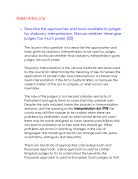How Much Power Does The Supreme Court Really Have?
In the court case Worcester v. Georgia, the U.S. Supreme Court held in 1832 that the Cherokee Indians constituted a nation holding distinct sovereign powers. Although the decision became the foundation of the principle of tribal sovereignty in the twentieth century, it also helped the Judicial Branch realize that the system of Checks and Balances would not work in this case. They were able to pass a law that began the tribal sovereignty but with out the Executive Branch enforcing the law, it was useless. This essay is going to contain the historical background, the branches that were involved and how it leads to checks and balances and the historical significance to America.







